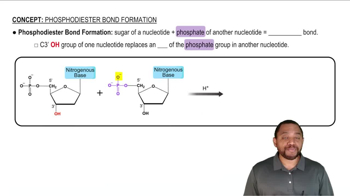Seeds and vegetables are often deficient in one or more essential amino acids. Using the table in problem 16.63, state whether each combination provides all of the essential amino acids.
<IMAGE>
a. rice and lima beans
 Verified step by step guidance
Verified step by step guidance Verified video answer for a similar problem:
Verified video answer for a similar problem:



 2:18m
2:18mMaster Primary Protein Structure Concept 1 with a bite sized video explanation from Jules
Start learning